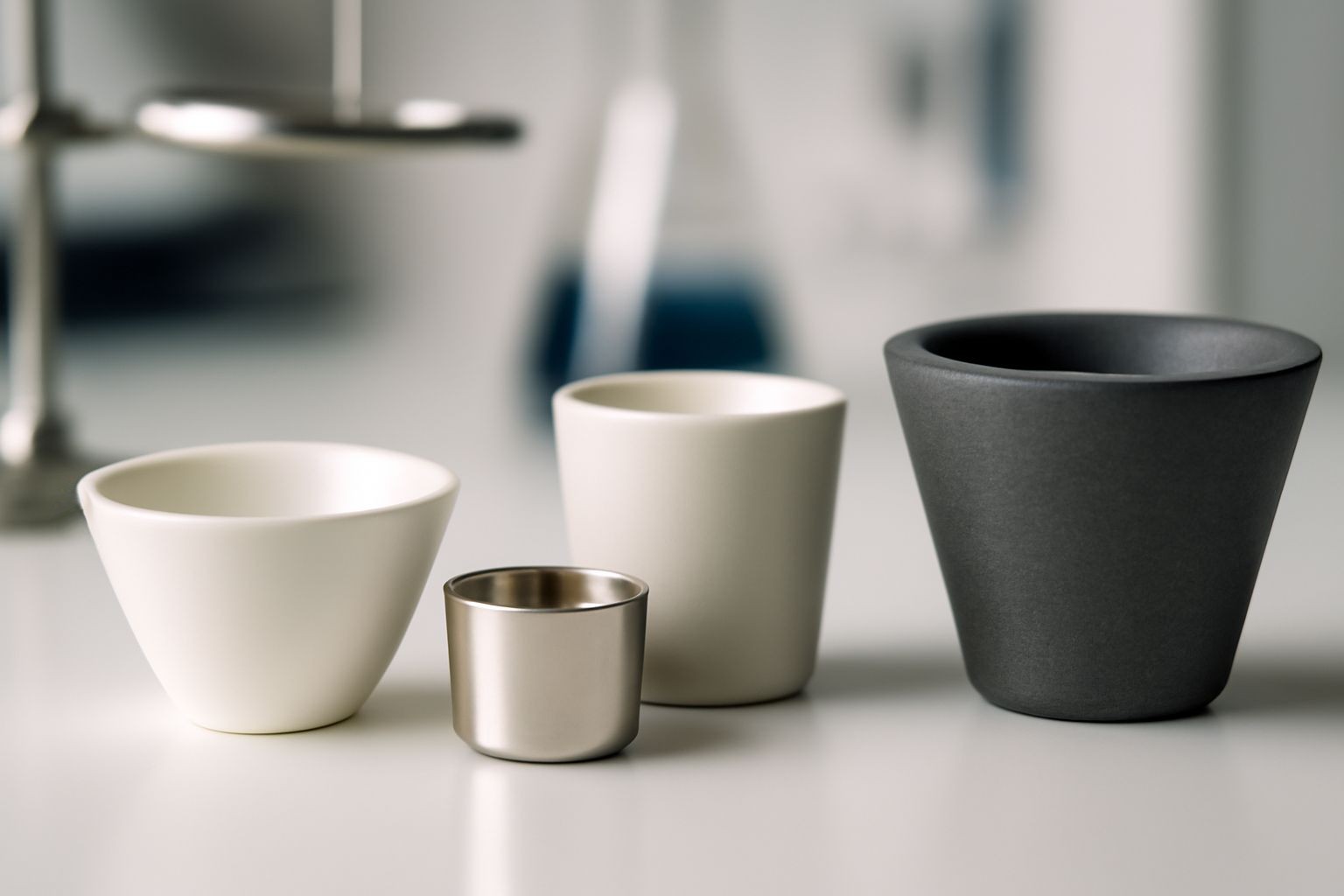Your cart is empty.
shop now
Your cart is empty.
shop now
One-size-fits-all rarely works in high-precision labs. A mismatched crucible can cause flawed results, contamination, or even damage delicate samples in your tests.
Laboratory crucibles for specialized applications match each test purpose—high-temperature analysis, chemical reactivity, or unique samples. Choosing the right material and shape gives labs the best results every time.

I see that working with the correct crucible transforms the process. Each application type often benefits from a tailored solution, and custom options open new possibilities for advanced research.
Material analysis often requires extreme heat where low-grade crucibles fail. The wrong choice can lead to cracks or impurities in crucial experiments.
The best crucibles for high-temperature analysis are made from platinum, alumina, or zirconia because they withstand high heat, avoid chemical change, and support reliable results.
| Material | Max Temp (°C) | Best Test Application | Notes |
|---|---|---|---|
| Platinum | 1770 | Trace metals, sensitive samples | High purity, long lifespan (Platinum info) |
| Alumina | 1700 | Thermal cycling, ceramics | Cost effective, general use |
| Zirconia | 2200 | Extreme heat, aggressive chemicals | Excellent thermal stability |
For each high-temperature run, I always match the crucible’s material to the project. Refractory materials hold up under harsh lab conditions, and careful size selection ensures safe, even heating. This approach supports accuracy in results and prevents premature wear or failure.
Chemical testing sometimes involves strong acids or bases that eat away common labware. Choosing the wrong crucible risks reaction contamination or equipment destruction.
Ceramic crucibles like alumina, or noble metal crucibles such as platinum, are best for chemical testing because they resist attack and avoid interaction with the sample.
| Material | Chemical Resistance | Typical Use Case | Limitation |
|---|---|---|---|
| Alumina | Acids, most bases | Titrations, organic testing | Brittle if dropped (Alumina info) |
| Platinum | Resistant to nearly all reagents | Trace analysis, high-purity chemistry | Expensive, avoid halide exposure |
| Porcelain | Good for weak acids/bases | Basic school lab work | Can leach with strong acids or bases |
I always review the chemical compatibility table for each experiment. Guides from chemical resistance resources list what lasts and what does not. Matching crucible and reagent helps protect both result and equipment, especially with unknown or aggressive samples.
Some tests need non-standard shapes, uncommon volumes, or materials matched to exotic samples. Off-the-shelf products often do not deliver the precision or safety that some research demands.
You can customize crucibles by choosing body shape, size, thickness, or material. Consultation with a supplier allows exact fit, longer uptime, and new research options for specialized work.
| Design Parameter | Customizable Option | Benefit in Practice |
|---|---|---|
| Shape | Cylindrical, bowl, conical, custom | Exact instrument fit, new sample forms |
| Size | Volume from 0.1ml to 100ml+ | Reduces waste, fits rare sample needs |
| Wall Thickness | 0.2–5mm, as required (wall thickness info) | Optimizes heating profile |
| Material | Platinum, alumina, silica, more | Makes method work for difficult chemicals |
I have requested custom crucibles for projects with rare or valuable samples. Small design changes made a big difference in analysis speed and ease. Most advanced suppliers can adapt their production to support any scientific method. Consulting your manufacturer during experiment planning is a smart early step.
Working with metals and alloys exposes crucibles to not just heat but also reactive melts and tough cycling demands.
Crucibles made from platinum, graphite, or zirconia are ideal for metal and alloy research due to high corrosion resistance, strong structural stability, and the ability to withstand rapid heating and cooling cycles.
| Material | High-Temp Capability | Resistance Profile | Example Application |
|---|---|---|---|
| Platinum | 1770°C | Blu strong, non-reactive, slow wear | Noble metal melting, trace metal study (metallurgy info) |
| Graphite | 3000°C | Withstands extreme heat, low cost | Alloy smelting, rapid heat cycles |
| Zirconia | 2200°C | Resists corrosion and wear | Oxide crystal growth, challenging alloy prep |
Graphite crucibles serve well for alloys that reach ultra-high temperatures, but they need an inert atmosphere due to oxidation risk. Zirconia works great for corrosion resistance and can handle cycling better than cheaper models. Material science literature highlights the importance of picking based on exact use. Joining industry discussions or reading up on cutting-edge metallurgy guides is always helpful for special metal projects.